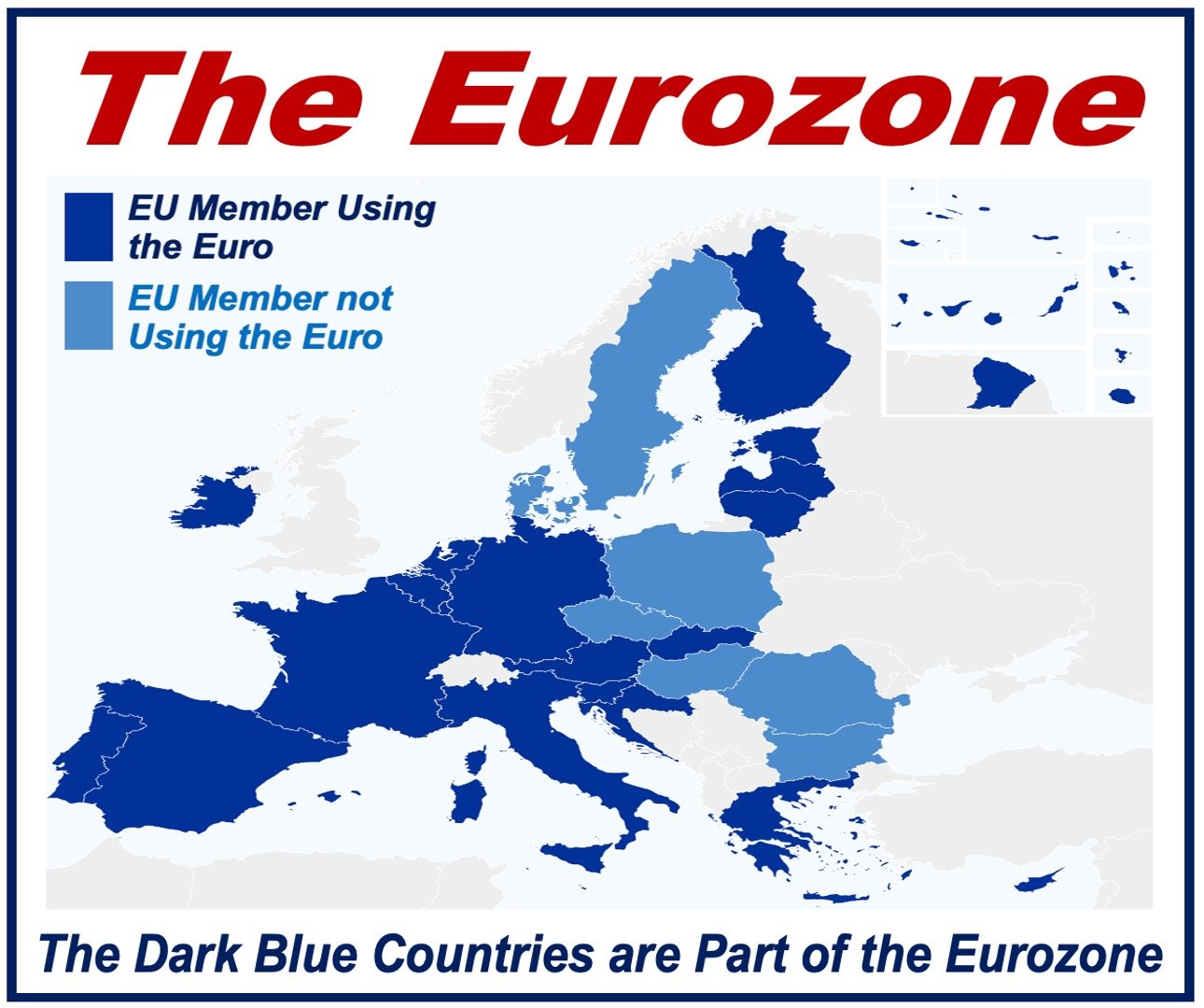What is the Eurozone?
The term Eurozone refers to member states of the European Union that have adopted the euro (€) as their official currency.
The euro, which is seen as a hard currency, is accepted all over the world, like the US dollar, pound sterling, and Japanese yen.
The official term for the region in Europe where the euro is an official currency is the Euro Area. However, the word ‘Eurozone’ has become so widespread that it is now also accepted as a common term.
Collins Dictionary has the following definition of the term:
“The eurozone is all those countries that have joined the European single currency, considered as a group.”
As you can see in this quote below from the European Commission (part of the European Union), they use the term Euro Area rather than Eurozone:
“The euro area consists of those Member States of the European Union that have adopted the euro as their currency.”
Eurozone vs. European Union
The European Union has 27 member states. 19 of them use the euro as their official currency, that is, 19 of them are in the Eurozone.
- The European Union (EU)
The following countries are EU member states: Austria, Belgium, Bulgaria, Croatia, Cyprus, Czech Republic, Denmark, Estonia, Finland, France, Germany, Greece, Hungary, Ireland, Italy, Latvia, Lithuania, Luxembourg, Malta, Netherlands, Poland, Portugal, Romania, Slovakia, Slovenia, Spain, and Sweden.
- The Eurozone
These countries are in the Eurozone: Austria, Belgium, Cyprus, Estonia, Finland, France, Germany, Greece, Ireland, Italy, Latvia, Lithuania, Luxembourg, Malta, Netherlands, Portugal, Slovakia, Slovenia, and Spain.
- Non-Eurozone EU member states
These countries are not in the Eurozone, they have their own national currencies: Bulgaria, Croatia, Czech Republic, Denmark, Hungary, Poland, Romania, and Sweden.

Eurozone – brief history
The Eurozone was established in 1999. Its aim was to facilitate more efficient trade, enhance economic stability, and foster closer ties among its members.
By adopting a single currency, exchange rate fluctuations would be eliminated among member states, the founders of the new currency explained. Also, prices would become more transparent and predictable for businesses and consumers alike.
The European Central Bank, which has its headquarters in Frankfurt, Germany, is the Eurozone’s central bank. Its main objectives are to maintain price stability and to safeguard the currency’s value. It does this by setting interest rates and controlling inflation.
Eurozone membership
Adopting the euro as a country’s official currency comes with strict criteria, known as the convergence criteria or Maastricht criteria. These include:
- Government budget deficits must be below 3% of GDP (gross domestic product).
- Public debt must not exceed 60% of GDP, or it must be approaching this value at a satisfactory pace.
- There should be stable exchange rates in relation to the euro.
- Inflation rates must be within 1.5 percentage points of the top three EU countries.
Long-term interest rates must be within 2 percentage points of the three lowest EU rates.
Benefits and challenges
Below are some pros and cons of the Eurozone:
Pros:
- Simplified cross-border transactions.
- Increased price transparency.
- Reduced transaction costs.
- Boosted trade and economic growth.
Cons:
- Requires close fiscal coordination among members.
- Challenges of a uniform monetary policy for diverse economies. For example, if your country’s inflation rate is higher than that of the other Eurozone members, you do not have the option of devaluing your currency to make exports more competitive.
Summary
EU countries that have adopted the euro as their official currency form part of the Eurozone. Some EU countries, such as Denmark and Sweden, are not in the Eurozone, they have chosen to continue using their own currencies. Some other countries are not members because they have not met the required criteria.
Observers continue to watch and vigorously debate its success and challenges.

